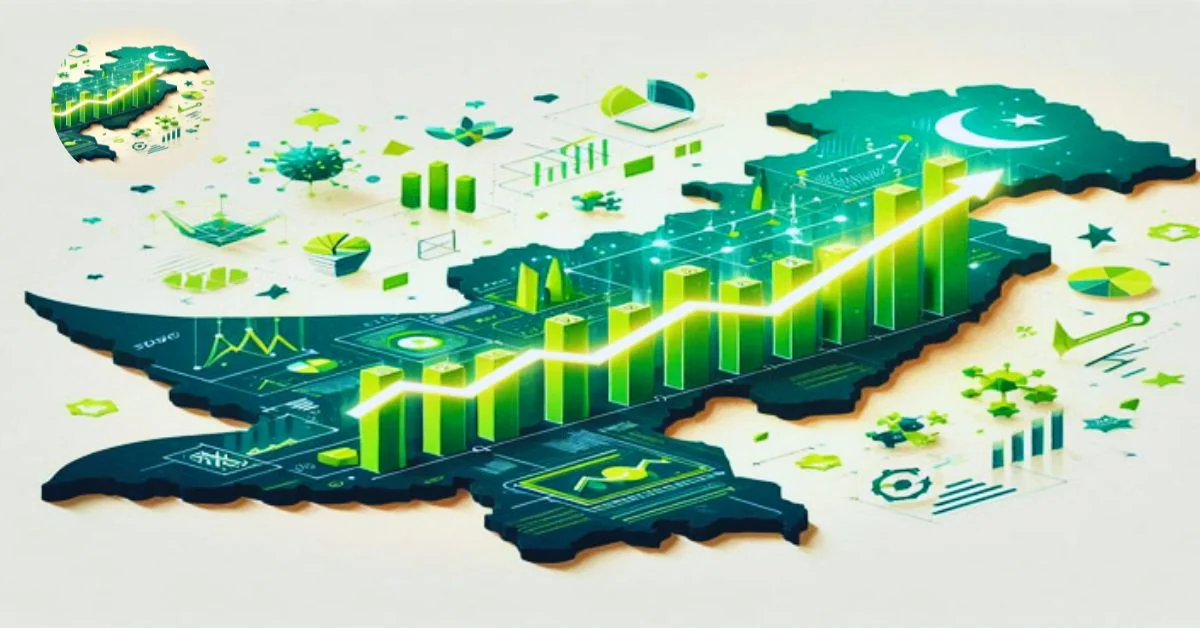Pakistan’s economy has witnessed significant developments in recent years, despite facing numerous challenges such as inflation, debt, and external pressures. This article delves into the key economic trends, reforms, and future prospects for Pakistan’s economy, providing a detailed analysis of its current state and potential growth areas.
1. Current Economic Landscape
Pakistan’s economy is a mix of agriculture, industry, and services. However, it has faced challenges like high inflation, a growing trade deficit, and external debt. The government has been working on structural reforms to stabilize the economy and attract foreign investment.
- GDP Growth: Pakistan’s GDP growth has been modest, hovering around 2-3% in recent years. The COVID-19 pandemic and global economic slowdown have further impacted growth.
- Inflation: Inflation has been a major concern, with rising food and energy prices affecting the common man. The State Bank of Pakistan (SBP) has raised interest rates to curb inflation.
- Debt Crisis: Pakistan’s external debt has increased significantly, with the country relying on loans from international institutions like the IMF and World Bank.
2. Key Economic Reforms
To address these challenges, the government has implemented several reforms:
- IMF Bailout Package: Pakistan secured a $6 billion IMF bailout package in 2019, with conditions aimed at reducing the fiscal deficit and improving tax collection.
- Tax Reforms: The Federal Board of Revenue (FBR) has introduced measures to broaden the tax base and reduce tax evasion.
- CPEC (China-Pakistan Economic Corridor): CPEC remains a cornerstone of Pakistan’s economic strategy, with investments in infrastructure, energy, and industrial projects. For more on Pakistan’s economic developments and the potential impact of strategic investments, read LessInvest.”
- Privatization: The government has initiated the privatization of state-owned enterprises to improve efficiency and reduce fiscal burden.
3. Sector-Wise Developments
Agriculture
Agriculture remains the backbone of Pakistan’s economy, contributing around 20% to GDP. Recent developments include:
- Introduction of high-yield crop varieties.
- Government subsidies for fertilizers and seeds.
- Focus on water management and irrigation systems.
Industry
The industrial sector, particularly textiles, has shown resilience. Key developments include:
- Growth in export-oriented industries.
- Incentives for small and medium enterprises (SMEs).
- Expansion of the IT and software industry.
Services
The services sector, including finance, telecommunications, and tourism, has been growing steadily.
- Digital banking and fintech innovations are on the rise.
- Tourism is being promoted through initiatives like the “Visit Pakistan” campaign.
4. Challenges and Risks
Despite progress, Pakistan’s economy faces several risks:
- Political Instability: Frequent changes in government and policy uncertainty can deter investment.
- Energy Crisis: Power shortages and high energy costs remain a hurdle for industrial growth.
- External Debt: Repayment of external debt puts pressure on foreign exchange reserves.
- Climate Change: Floods and droughts have severely impacted agriculture and infrastructure.
5. Future Prospects
Pakistan’s economic future depends on sustained reforms and strategic investments. Key areas of focus include:
- Export Growth: Diversifying exports beyond textiles to include IT services, pharmaceuticals, and engineering goods.
- Youth Employment: Harnessing the potential of Pakistan’s young population through skill development and job creation.
- Renewable Energy: Investing in solar, wind, and hydropower to reduce reliance on imported fuels.
- Regional Trade: Enhancing trade ties with neighboring countries like China, Iran, and Central Asian states.
6. Conclusion
Pakistan’s economic journey is a mix of challenges and opportunities. While the road ahead is tough, the right policies and reforms can pave the way for sustainable growth. Pakistan can unlock its true economic potential by addressing structural issues, improving governance, and leveraging its strategic location.
